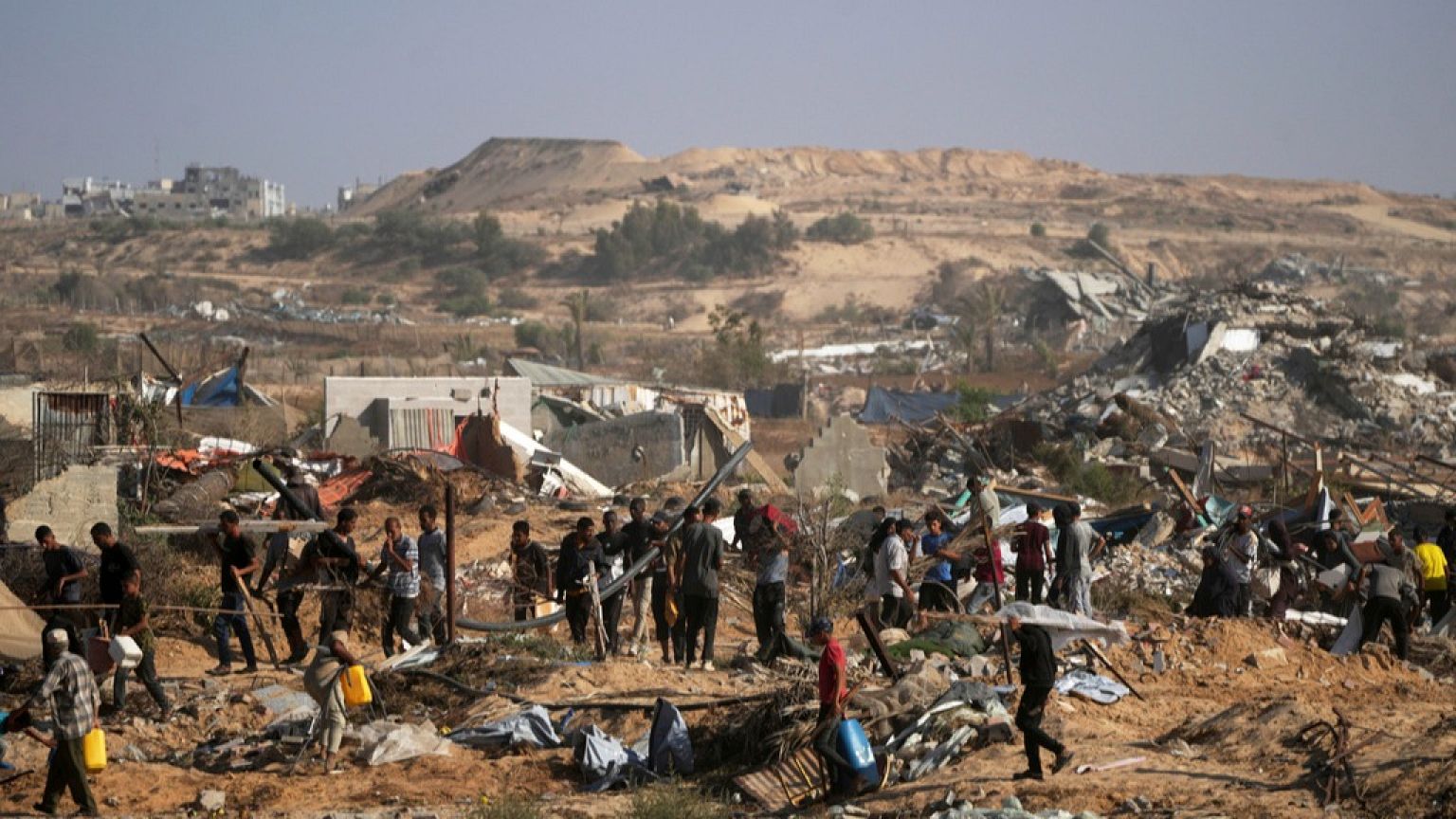Rafah, Gaza Strip – May 28, 2025: At least 47 people were injured on Tuesday as chaos unfolded at a food distribution center run by the controversial US-backed Gaza Humanitarian Foundation (GHF), according to the UN Human Rights Office.
The GHF facility, located in the southern city of Rafah, came under scrutiny after crowds overwhelmed its aid station, prompting Israeli troops to allegedly open fire. UN officials and eyewitnesses report that most of the injuries were caused by gunshots. Gaza’s Hamas-run health ministry confirmed one fatality and 48 injuries.
UN: “Most Injuries Due to IDF Gunfire”
Ajith Sunghay, head of the UN Human Rights Office in the Palestinian territories, stated, “It was shooting from the IDF [Israel Defense Forces].” The IDF has claimed troops fired only warning shots into the air, not at people. However, the situation on the ground remains contentious as Reuters footage showed chaotic scenes, with people running as gunshots rang out.

The GHF has come under criticism from the UN and humanitarian agencies for bypassing established aid channels. Unlike traditional operations led by UN bodies, the GHF relies on private US contractors and operates under Israeli military oversight. This approach, critics say, compromises the safety and neutrality of aid efforts.
Controversial US-Backed Aid Program Under Fire
“What we saw yesterday is a very clear example of the dangers of distributing aid in the way GHF is doing this,” said Sunghay. “Exposing people to death and injury while trying to get food is unacceptable.”
The GHF insists that its team followed protocol to minimize harm. “We fell back to allow a small number of Gazans to take aid safely and dissipate,” the group said in a statement. It denied that its personnel or IDF troops fired at civilians.
Despite this, aid agencies have refused to collaborate with GHF, citing violations of humanitarian principles. The UN and Red Crescent maintain that their own coordinated plans for aid delivery are safer and more effective, with large supplies ready for entry into Gaza.
Netanyahu Defends Aid Strategy Amid Criticism
Israeli Prime Minister Benjamin Netanyahu defended the GHF initiative, saying the goal is to ensure aid reaches civilians without being intercepted by Hamas. “We are creating sterile, controlled distribution sites to reduce looting and make sure aid is not a weapon of war,” he said.

However, aid workers say the plan does little to address the core humanitarian issues in Gaza. Israel’s total blockade, which resumed in early March following a breakdown in ceasefire talks, has left over 2 million Gazans on the brink of famine.
Fatalities and Rising Tensions
The Gaza health ministry identified the deceased as Salem Abu Moussa, who died after being shot near the aid center. He was initially treated at a Red Cross field hospital before being transferred to Nasser hospital in Khan Younis.
“We have verified 47 gunshot injuries,” said Sunghay, adding that many of the wounded are women, children, and the elderly who are unable to travel safely due to fear of arrest or ongoing bombardments.
Background: The Broader Conflict
The aid crisis comes amid ongoing military operations launched by Israel after Hamas’ 7 October 2023 cross-border attack, which killed 1,200 Israelis and resulted in over 250 hostages. In response, Israel has conducted a prolonged military campaign in Gaza, with Gaza’s health ministry reporting over 54,000 fatalities since then.
The current humanitarian strategy continues to divide opinion. While the US and Israel argue their direct involvement reduces aid diversion, the UN counters that only impartial and safe humanitarian delivery mechanisms can address Gaza’s worsening crisis.
Conclusion
The latest violence highlights the risks faced by Gazans desperate for survival, and the urgent need for a coordinated, transparent, and humanitarian-led solution to aid distribution in the region. As international pressure mounts, questions grow over the ethics and efficacy of militarized food aid systems in conflict zones.








